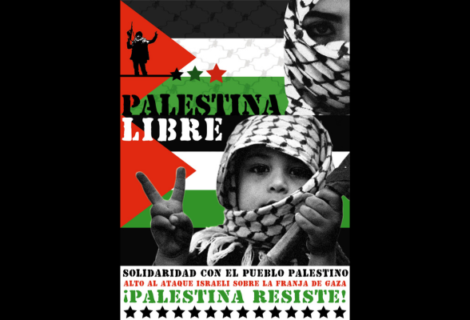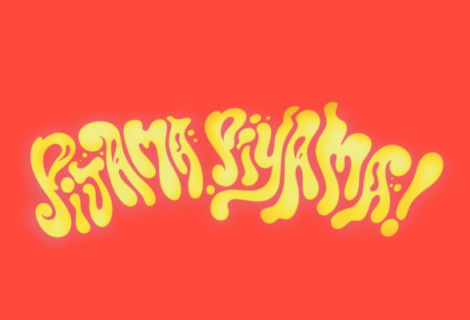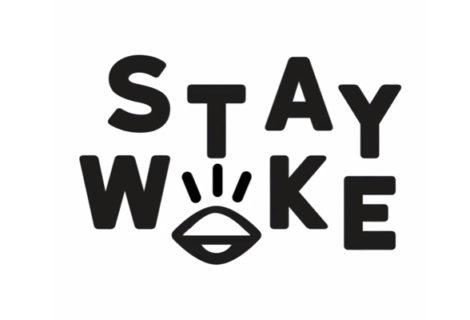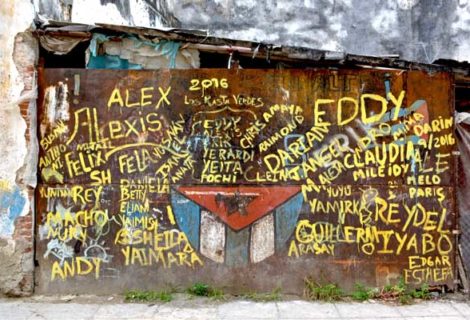Myrlin Hepworth: El Coyotito Of La Phoenikera
Every desert has its poets, coyotes who see things through a different lens and have a compulsion with written words; storytellers that survive under the most straining conditions. They are artists and culture pushers who continuously battle ignorance and sometimes an indifferent audience.
Our city has many scribes, some hidden and reluctant to spill their guts to strangers, others are pretty comfortable smothering your face in them.
One of those scribes is Myrlin James Gonzalez Hepworth, a Phoenikero with the most non-Mexican-Mexican name. He is the kind of dude you want producing shit in La Phoenikera, and whatever your opinion may be about his motives and skills as a poet/musician/performer, this mofo has guts, and that’s what it takes to be a culture producer in our piece of “brown wasteland,” as some dipshit writer once called it.
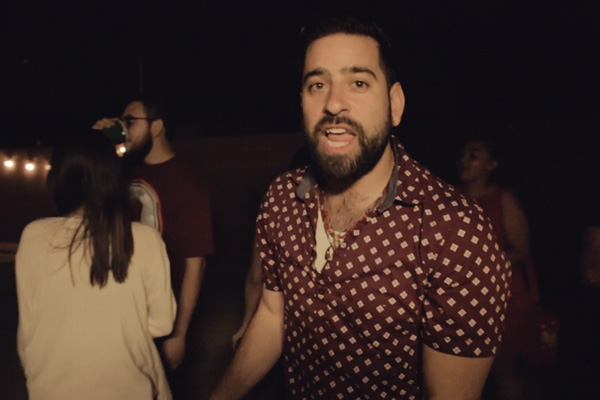
Myrlindo in the set for his “Just This” music video coming up later this year. Photo: Alisa Avila.
Myrlin grew up listening to coyote stories about the creation of the world and humanity, about the trickster-wise character that often appears in indigenous narrations of the Southwest. He never anticipated that he would become the coyote of his own story.
His dad told him these fables, and his mom taught him to love the melanin populating his skin and the legacy of his ancestors.
He was brought up between northern Idaho and New Mexico and spent most of this time in Lewiston, Idaho, a place close to where the most important Aryan Nations compound in the world used to be. It was a place where he was a few shades too brown to be entirely white.
He’s loved hip-hop since ’94 when he heard “Crooklyn” by the Crooklyn Dodgers while his mom was playing the Spike Lee joint by the same title. He then moved to listen to the greats like Biggie, Pac, Outkast or J Dilla and others like Common, Mos Def, and The Roots. He remembers that was it; it had him, it owned him, it was something made for him.
At the same time, his mom played tons of other music in their home. “She played Stevie Wonder, Linda Ronstadt, Paul Simon; some Mariachi music, José Alfredo Jiménez, Chente, Pedro Infante, and Lola Beltrán. Then there was also Sly and The Family Stone, The Temptations, Etta James, Nina Simone, Hector Lavoe,” he recounts.
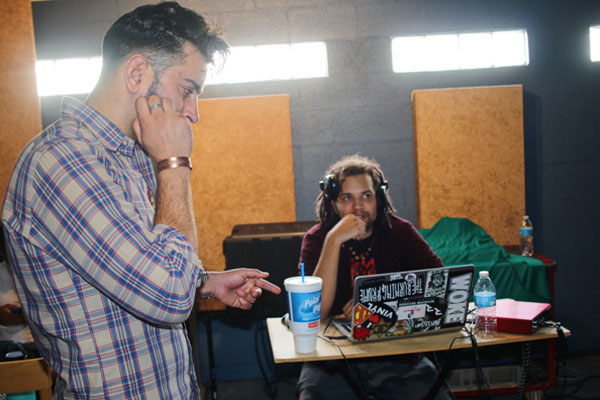
Myrlin plotting the next move. Photo: Alisa Avila.
His mother’s side of the family lives in Santa Fe and Northern New Mexico since the state was part of Mexico, during colonialism. His roots are of Spanish and indigenous descent, having Pueblo and possibly Comanche as part of his genome.
Myrlin explains that his mom’s teachings on resistance and accepting his brownness were crucial in his upbringing. Also valuable was his father’s insight on the history of indigenous people in America, which he learned while living in a reservation because his grandfather taught there and coached basketball.
As a result, Myrlin developed a sense of pride in who he is, which helped him face constant targeting because of the pigment of his skin; brown was scarce at his Lewiston High School.
That targeting wasn’t exclusive of the white spaces he occupied though. It also worked the other way around. “In New Mexico some of my cousins where like ‘ah your dad is white, you’re like a pocho, you’re one of those,’” he recalls. That made him insecure, mostly because he wanted people of color to accept him.
A Coyotito is born
When Myrlin reached High School, he discovered he had a knack for storytelling and his teacher “Miss Mac” encouraged his talents. He thinks it has a lot to do with his family being incredible storytellers, which was something he could absorb.
Writing is the medium that speaks to him the most. Writing poetry was a survival mechanism for him, and he started when he was in 9th grade.
Fresh out of high school, Myrlin decided to come to Arizona after he didn’t take the SAT’s. He came here because a friend’s sister was here and he planned to go to a community college. That was around 2005.
After hopscotching through the East Valley, he settled in Tempe and one day he saw a call for poets at a poetry slam venue on Mill Ave.; he felt compelled to participate.
“I was super scared, and I wrote some shit and finally did it. Within a year, I rose in the Arizona poetry scene, and I was on my way to the finals for a national poetry slam. Subsequently, I was able to make a career out of it,” Myrlindo explains.
At the time, he was on his own going to school and working as a teacher’s assistant. He learned to work with kids by participating in the AmeriCorps Learn and Serve America program which provided opportunities for students nationwide to participate in service-learning projects and gain valuable experience while helping communities.
When he started going to ASU he learned how literature is taught in an institution; he became aware of performing styles and poetry movements and writing styles.
“I must say it gave me an advantage with my peers because I was learning all these things. I also became aware of how professors would say which poetry should be studied or which writers should be revered. So I was receiving training in technical writing, but I was also learning about the shit that comes from the block, not just the ivory tower,” he says. “That made it easier for me to be mobile in a lot of different spaces, because at that time, the perception of slam poetry or poets who perform was pretty negative, one because poets that didn’t come from academia were deemed as trash, and two, because academic poets were inaccessible.”
Myrlin quit his day job as a pre-school teacher while still attending ASU, found a niche and began teaching poetry to middle and high school students.
He founded Phonetic Spit with other local writers. They started it because of the need to create youth culture in La Phoenikera since there was none concerning poetry. The organization is now lead by Ashley Hare and Tomás Stanton.
That is what Myrlin does now predominantly. He travels around the country teaching youth how to tell their stories through narrative.
He gives talks where there’s a dialog about race, politics, art, and hip-hop; he talks about his own story; he goes into English or writing classes and creates a safe space where students can speak freely about any topic or about who they are, instead of adhering to standards.
“I tell them that they are the standard, that they are all they need. I encourage them to be brave unapologetic and honest .”
By sharing their experiences, participants become empowered by their stories and share them with the class, displaying everyday issues that affect their lives like drug abuse, imprisonment of family members, violence, rape; things that they are being asked about for the first time in their academic journey.
“This process humanizes the students by letting their classmates and teachers know that there is a story behind all of them, and in a way that changes the culture and dynamics of the classroom.”
One of the many things poetry has given to Myrlin is the ability to walk into rooms that he wouldn’t have been able to otherwise, you know, without a mic.
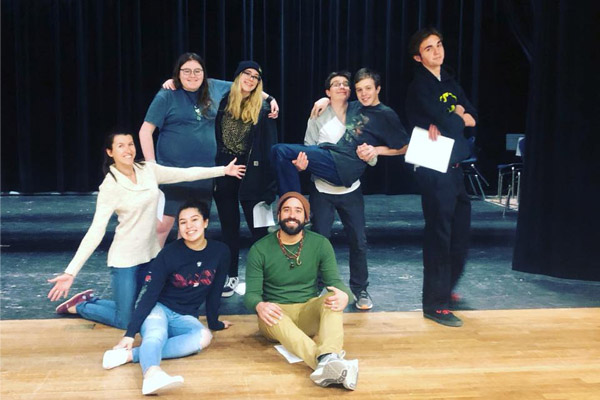
Working with kids at Roaring Fork High School in Colorado.
Myrlin, the hip-hop producer
For Myrlin, poet and musician are synonymous. Aside from working with youth through poetry, he’s also a music producer. He’s produced an album every two years since his debut with The Funky Autopsy mixtape in 2014. His second project was Eulogy in Blue and his latest is Remember Why, which dropped about a month ago.
The musical references he acquired growing up and the mix of styles and genres he listens to perspire through the sounds of Remember Why.
As we listened to the record, we were surprised with its unpredictability and plurality of sound. The track list was narrowed down from 56 songs created in a four-year period.
“My new album shows these influences, and it’s kind of unconventional or unorthodox. It’s a hip-hop album, but there are congas and Afro-Cuban rhythms. It’s very diversified, but there is a cohesive expression and narrative going from one song to the next.”
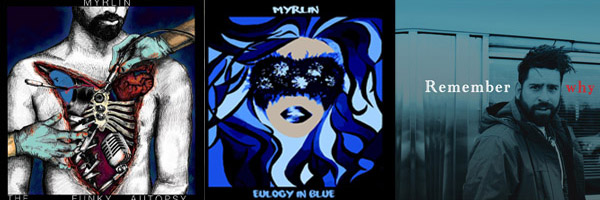
Myrlin writes mostly about what he’s going through at a specific moment. “I don’t set out to write a feminist piece or something that is racially charged or to make a statement necessarily, at least not so much in recent years,” he says. “I excavate sounds and words until I find myself in them and in a position to speak openly about what the song becomes.”
Remember Why Was recorded and produced by Myrlin except for two tracks that were done by producer and MC, Mike Maban.
“Basically, I sat down and pushed buttons and spent sleepless nights making the beats, and creating something that doesn’t sound like anything else,” he says.
Myrlin works his way through samples and different sounds made by his favorite instruments, or at least the ones he thinks would fit well in his song. Sometimes he achieves the sound he’s aiming for, others he doesn’t. You can’t win them all. Not every sound becomes a song.
He may like using techniques used by hitmakers he admires and uses instruments he loves, not just the ones that make something sound popular. He doesn’t try to fit into a sonic landscape of what’s easily recognizable, or what sounds like “now.”

Myrlin James Gonzalez Hepworth in the recording studio. Photo: Alisa Avila.
What is Remember Why about?
“It’s really about this on and off relationship of five years and really my choice to live a life on the road, to travel often, to be an entrepreneur and what it comes with. So there’s a lot of drifting when I put these songs together, I talk about place and origin, race and politics, love and things that are real to me. Years ago I put out this song called Hometown, and I realized that I was such an idealist or I had been for so long that I feel like […] people love it in my hometown, but they don’t know what the fuck I’m saying, they don’t know that I’m talking about whiteness and racism […] they don’t care because I realized as time went on that people compartmentalize. You might not like Kanye’s whatever, but people are still going to listen to his shit. If you were a Kanye fan in 2005, you’d still be like ‘fuck Kanye, but this song is dope.’ It has made me question the role of an artist in regards to influencing or changing culture, and it’s a tricky one, it’s tough for me to understand.
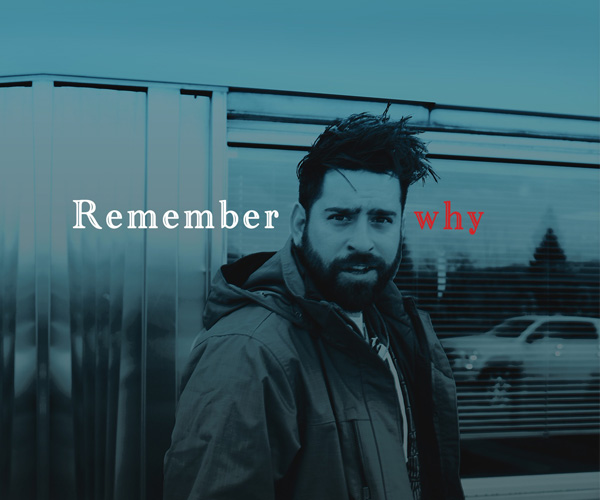
Remember Why was released about a month ago, check it!
In the new album, I have a song called The Message, and it’s about Phoenix, it doesn’t pull punches, and it’s about the Phoenix I know and love […] and yeah, I wish people that had grown up in Phoenix but lived in California when they were in second grade -but have been here over 20 years-, would stop telling people they grew up in California […] you grew up here, went to high school here, your kids were born here, stop saying you grew up in Cali. What’s up with your allegiance to L.A.? You can rep it too, but this is where your life has been. And the folks that have pride in Phoenix, the pride we actually need, are people that aren’t allowed in many spaces. I wish there were more pride [….] when you go to a city like Chicago, the people there think that their city is the best at everything, they fucking think they invented water, they have a lot of pride there, for better or for worse ‘Chicago over everything.’ There is zero here, that is why it’s so hard to make it here because there is no pride.”
When you write, do you write poems or bars on a track?
“Mostly it’s a process that goes hand in hand. I make the beat, write some lyrics, and then add them to it. I write some more, add them again […] So if it’s conceived as a song then I structure it like that, but if it is a poem, it’s just me writing and those never become songs, maybe concepts that I can transfer over, because when I’m writing poems I’m not trying to rhyme on beat, I’m not even trying to rhyme necessarily. I’m thinking about all the sounds, how it would sound in different languages like Spanish with Dominican or Mexican accent or from wherever. So when I’m writing I know how my voice sounds, it’s Hip-Hop, it’s country, it’s folky and bluesy, so I know how I sound like, and I compose poems and music accordingly.”
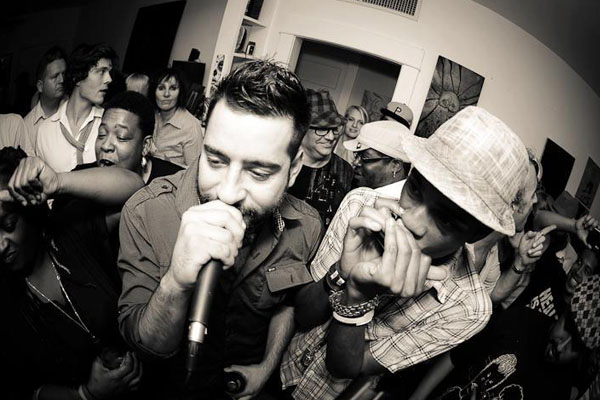
Poetry and music give Myrlin the ability to walk into rooms that he wouldn’t be able to otherwise.
Have you found your style?
“Yeah, musically I have, I mean, I’m always evolving. The Funky Autopsy was made up of beats that I found in old Outcast albums or a J Dilla song, but most of them were just mash up tapes from this guy in Prague. The same in Euology in Blue. But yeah, I think I’m at a point where I have my style.”
You can find his work on his website.

